China. The Great Wall of China is an absolute highlight of every visit to China. But if you don't want to share the wall with hundreds of other visitors, you have to think of something. In my following article you'll find out where and how you can do a hiking tour on the Great Wall of China and almost have the Wall for yourself. And for those of you with a little less time, it's even a day trip from Beijing. The Great Wall of China is especially beautiful at sunrise and sunset.
Unassigned, unpaid advertising. The article contains affiliate links.
Table of Contents and Quick Navigation
Great Wall of China
Hiking tour on the Great Wall of China: From Jiankou to Mutianyu
Directions to Jiankou
Sunrise at the Chinese Wall at the Zhengbeilou Tower
Ox Horn Edge
Mutianyu - Tower No. 23 to No. 14
Cable car at tower no. 14
What am I taking with me?
Sunset at the Chinese Wall in Simatai
Great Wall of China
The Chinese Wall is a system of several protective walls built at different times. The purpose of these walls was to protect the population from robbery by nomads from the north of the Chinese Empire. The first sections were built in the 7th century BC. The total length of the protective wall is 21,000 kilometres. However, the actual main wall is only about 2,400 kilometres long. It is the largest building in the world. Near Beijing there is a 600 km long section of which four sections have been restored for tourism. These are Badaling, Mutianyu, Simatai and Juyonguan. There are also other sections that have not yet been restored. And these are the more interesting ones, because they are far less visited and more original. One of these sections is near Jiankou. It is a wild part of the wall, partly overgrown by bushes, with loose stones and steep climbs.
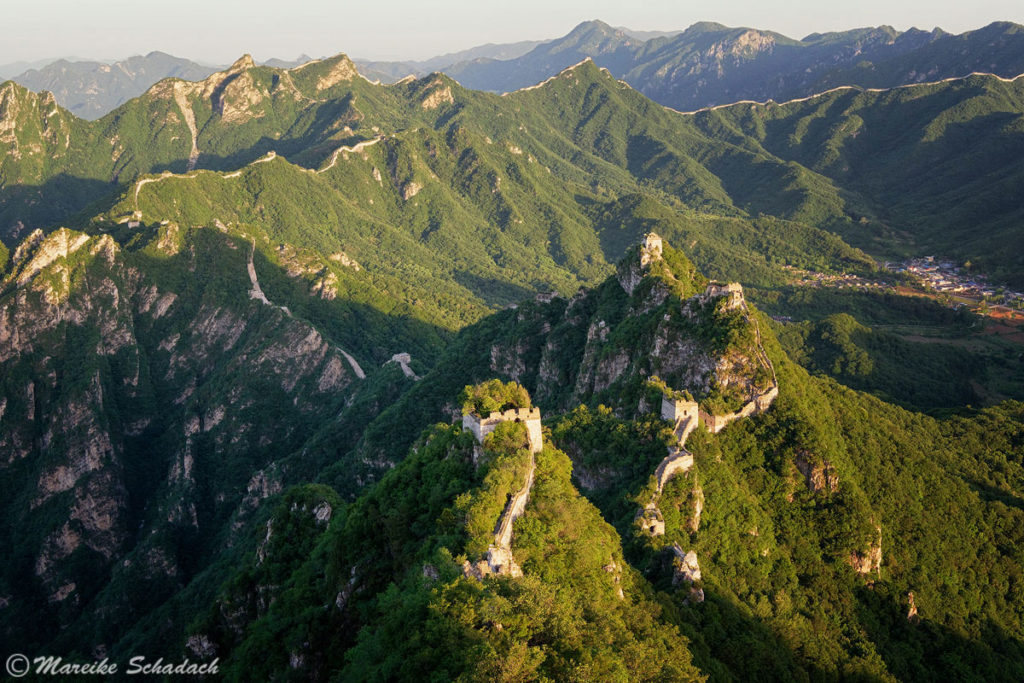
Hiking tour on the Great Wall of China: From Jiankou to Mutianyu
After some research on the Internet I found a tour at the provider Wildgreatwall that exactly met our wishes: A self-guided hiking tour on the Great Wall of China from Jiankou to Mutianyu at sunrise. The hike from the wild wall section Jiankou to the completely restored section Mutianyu is about 10 kilometers long and takes about four hours. Most of the time we had the wall to ourselves and were able to explore and photograph this great building in peace and quiet. In total there are about 600 meters of altitude to overcome.
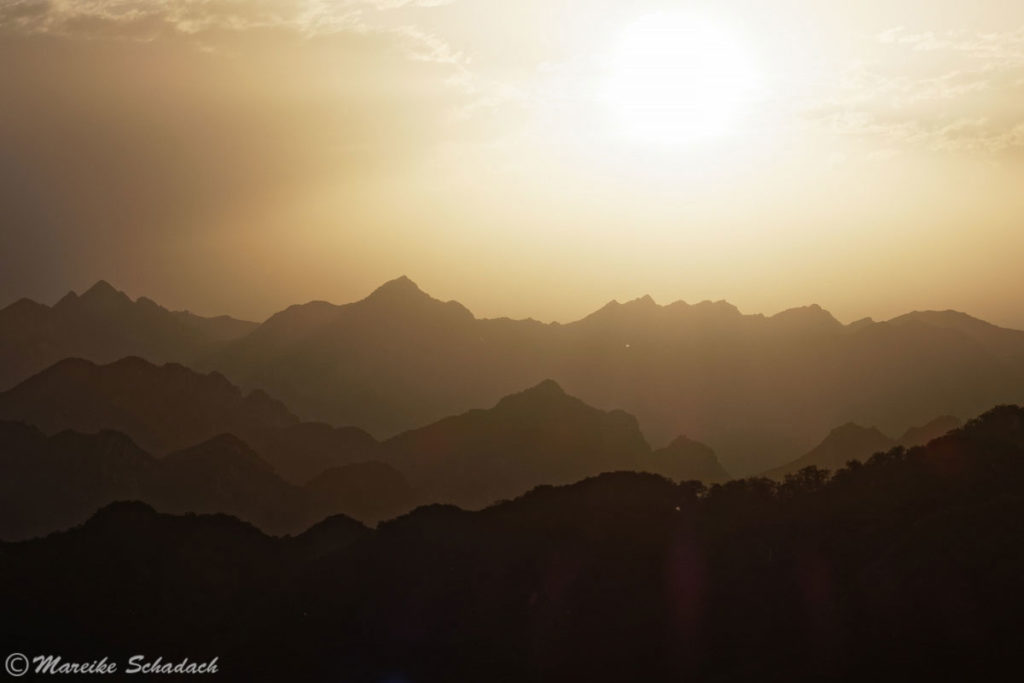
Directions to Jiankou
You can find out exactly when the sunrise is on the Sunrise-Sunset website. You can then arrange the time for the pickup from the hotel individually with the tour provider.
We started early in the morning. Our driver from wildgreatwall picked us up at 1:30 a.m. (!) from our accommodation in Beijing. After 2,5 hours drive we reached the village Xizhazi. From here we started in semi-darkness to the Great Wall (don't forget your headlamps!).
Sunrise at the Chinese Wall at the Zhengbeilou Tower
The hilly path behind the village Xizhazi up to the wall was a bit hard to find. For this reason the driver took us up to the Zhengbeilou tower. The one hour ascent to the tower was the most strenuous part of the whole hike and requires some climbing. After reaching the wall there was time for a breather. We said goodbye to our driver, who we only saw again later at the end of our hike. Equipped with a detailed description of the way and information about the history of the wall we continued on our own. But first we explored the ruins of the Zhengbeilou Tower and waited for the sunrise. The view from the top of the tower was breathtaking. Slowly it became brighter and the sun threw its first rays on the wall and towers.
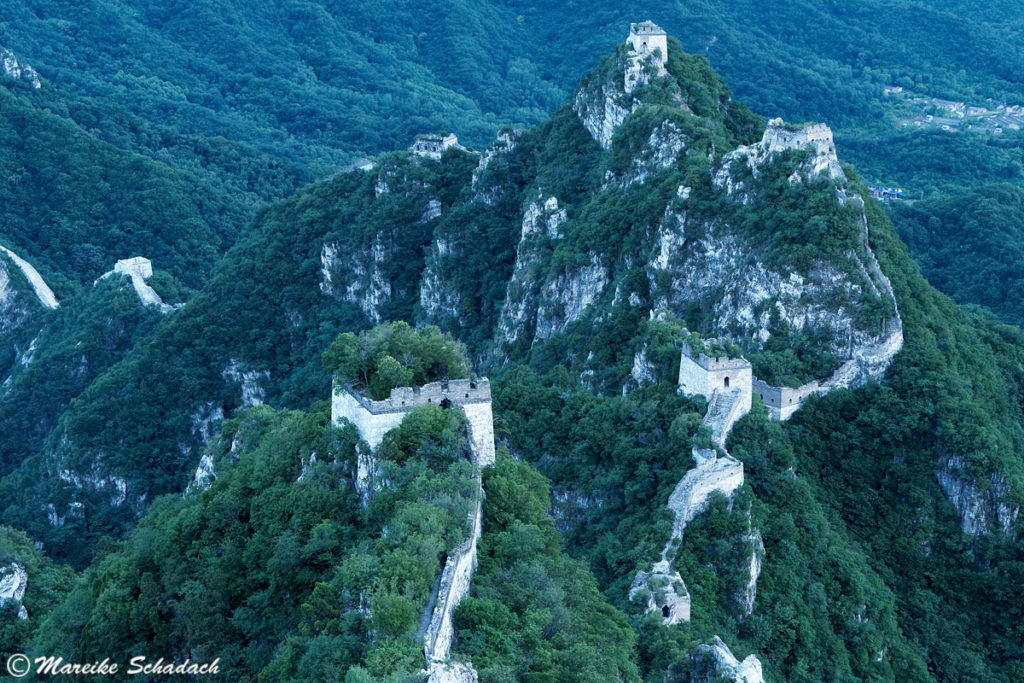
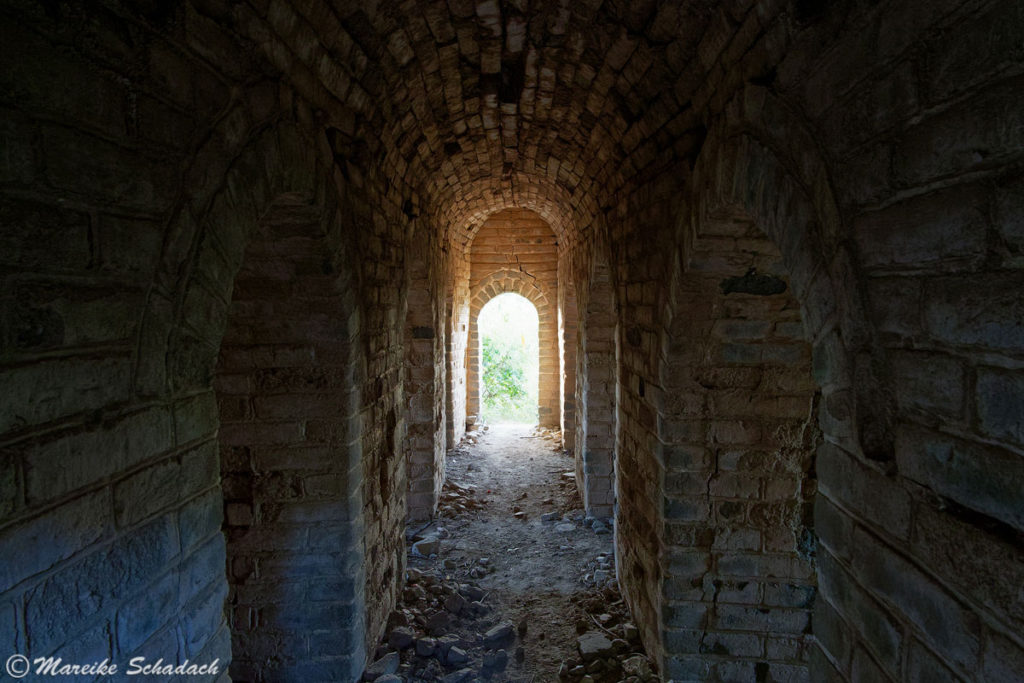

Ox Horn Edge
From the Zhengbeilou tower, the wall winds its way up the mountain to Ox Horn Edge. The path is steep, partly overgrown and requires some surefootedness. We passed several watchtowers. There are great views and photo opportunities from here. The highest point of Ox-Horn Edge is 1.044 meters. Climbing Ox-Horn Edge takes about 1.5 hours. The way down is even steeper and we even had to hold on to the wall in places. Afterwards we went further east to the 23rd tower of Mutianyu - the last restored tower at the Mutianyu wall.

Mutianyu - Tower No. 23 to No. 14
The trees around tower 23 are decorated with red ribbons. We found remains of a former drinks stand, a sign and a Chinese flag blowing in the wind. From here we went down the hill along the restored section for about an hour. The way led partly over quite steep and long stairs. The tower no. 20 of Mutianyu was blocked some time ago. To get further here, we climb over a wall about one meter high.
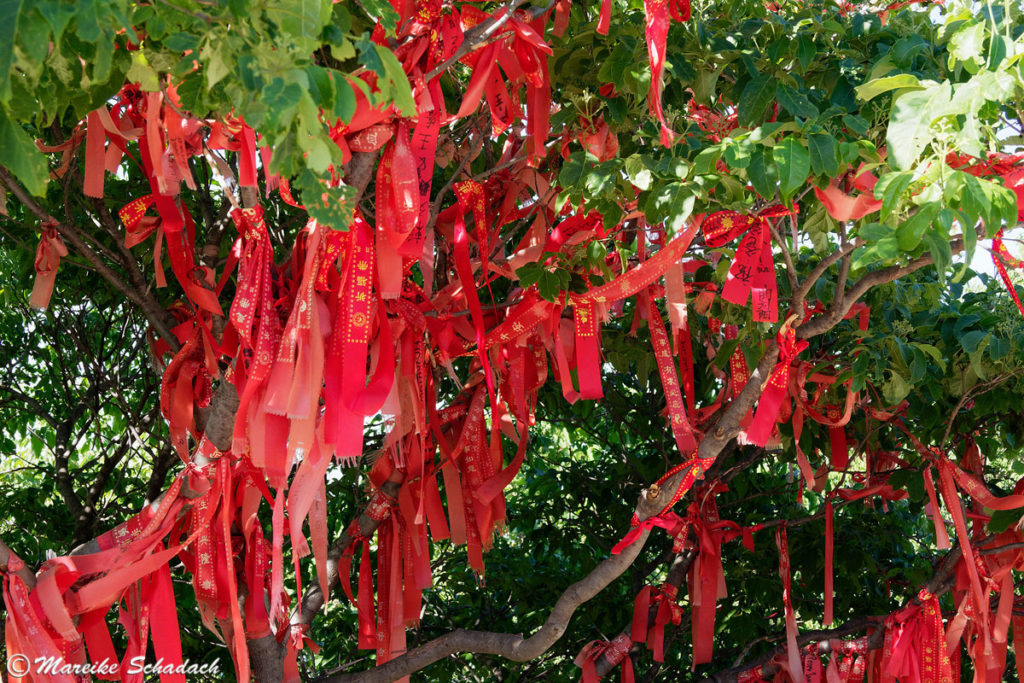
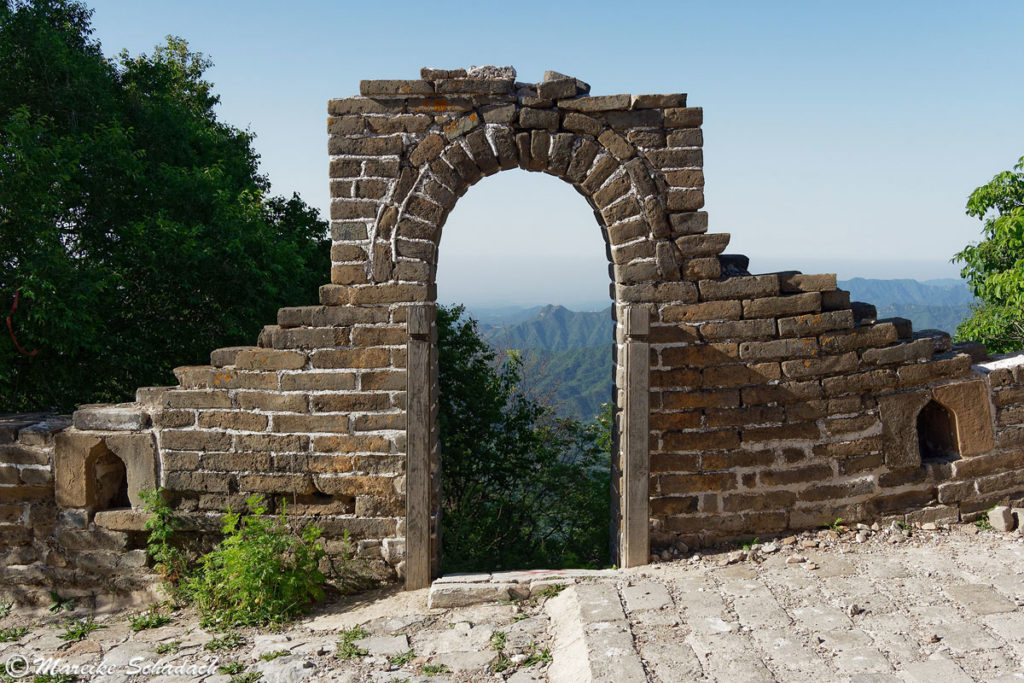
The Great Wall of Mutianyu was built in the middle of the 6th century. The entire section is about 2.2 kilometres long with 23 towers and served as a northern barrier to defend the capital and the imperial tombs during the Ming Dynasty. It is the longest fully restored part of the Great Wall.
Cable car at tower no. 14
Mutianyu is more tourist-friendly than the wild section Jiankou. Here the wall is not only completely restored but also offers a cable car, toboggan run and chair lift. The closer we came to the tower 14 of Mutianyu, the more visitors we met. Since the wall here is not as wild and romantic as in the previous section, we decided to leave the wall here with the cable car. When we arrived at the bottom we took the shuttle bus to the big parking lot at the visitor centre, where our driver was waiting for us.
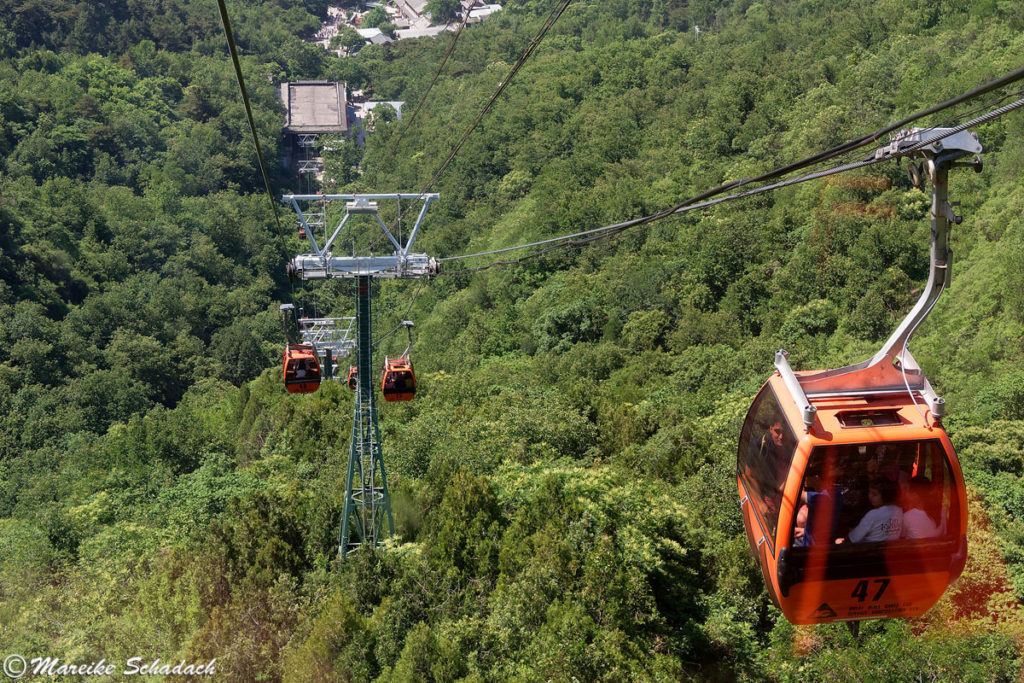

What am I taking with me?
- For the hiking tour from Jiankou to Mutianyu I recommend hiking boots, preferably ankle-high. On the wild section, the danger of buckling is quite high.
- Clothes according to the weather and temperatures (check weather forecast!). If you start before sunrise, it will also be cold in summer. During the steep ascent to the starting point you will quickly get very warm, so I recommend the proven onion layer system, if necessary a zip off trousers.
- if necessary cap and gloves if cooler weather is predicted
- probably hiking poles
- Headlamp for ascent before sunrise
- Sun cream, sun hat and sun glasses
- plenty of drinking water and snacks for on the go
- Camera, spare battery if necessary
Sunset on the Great Wall of China in Simatai
Want to see more of the Great Wall of China? Then you can continue from Mutianyu to the section in Simatai. The Simatai section is particularly interesting due to its location along steep gorges and its diversity. We visited the sunset section. However, only the area between east tower no. 5 and east tower no. 6 is open. Accordingly it was full then also on the wall. After the sun has set, gas lamps and other lighting bathe the wall in a romantic light.
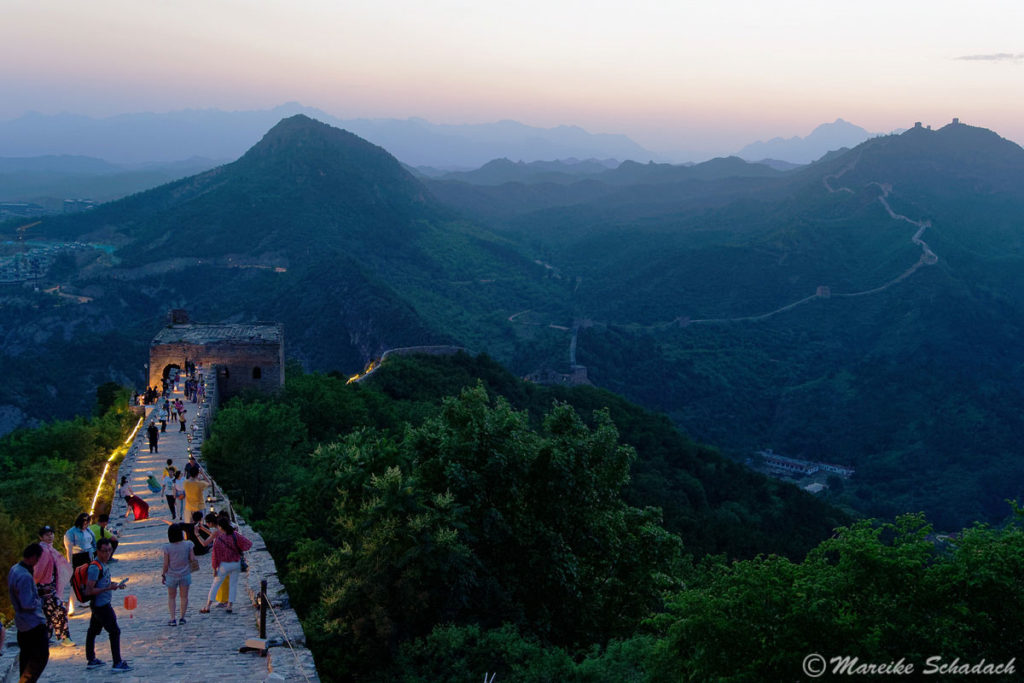

Gubei Water Town is the starting point for your night tour in Simatai, because at the end of the town is the valley station of the cable car. The place is a replica of Wuzhen Water Town in southern China. The entrance fee for Gubei Water Town is already included in the tickets for the night tour Simatai.
Book Recommendations for China
You want to know where the journey goes? Then I can recommend these books* about China.
You can order these books at Amazon with a click on the pictures. If you buy a product via one of these affiliate links, I get a small commission and you help me to keep filling Fernweh-Motive with interesting articles. The product will not be more expensive for you.
Have you ever been to China yourself and visited the Great Wall of China? How did you like it? Do you have any questions about my article or any other suggestions? If so, please write me a comment!
Do you want to know when there are new articles on my blog? Then follow me on Facebook, Pinterest or Instagram. I would also be very happy if you share my article with your friends.




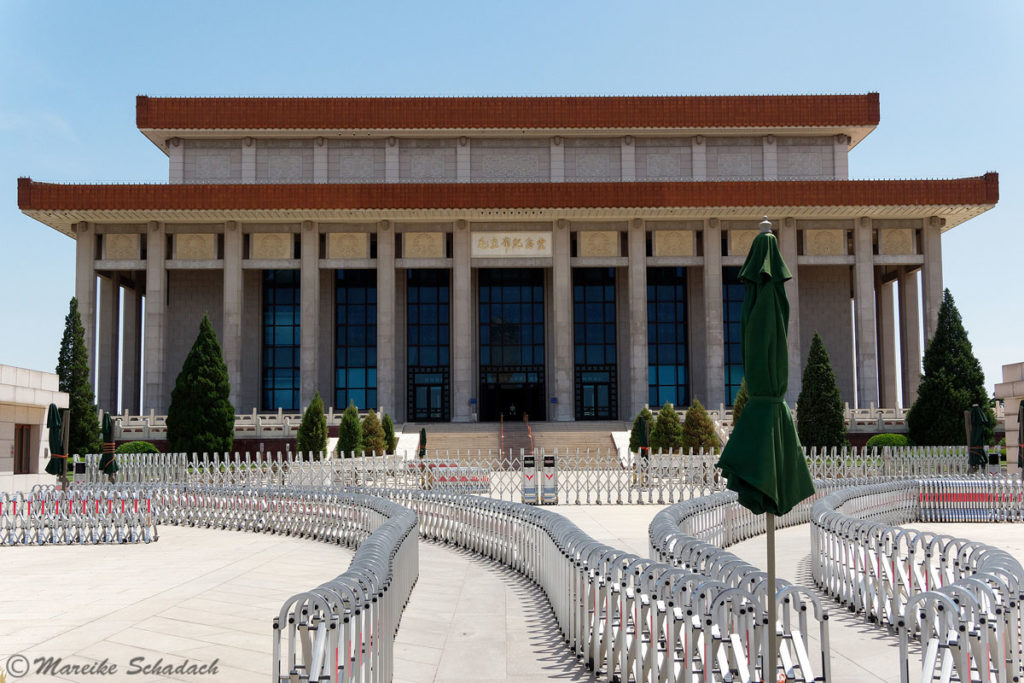



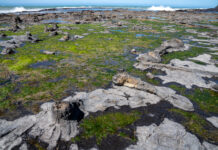
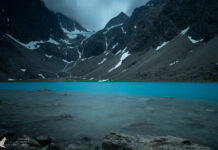
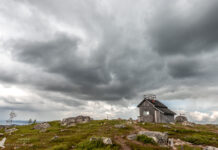

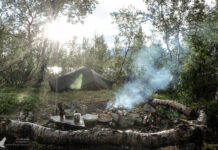


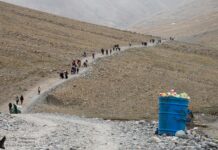
Die Wanderungen auf der Chinesischen Mauer sind wirklich wundervoll, vielen Dank für deinen schönen Artikel. Ich bin ebenfalls von Jiankou nach Mutianyu gewandert und am nächsten Tag noch von Gubeikou über Jinshanling nach Simatai. Nur einen Sonnenauf- oder untergang durfte ich leider nicht sehen.
https://www.schmale-pfade.de/die-chinesische-mauer/
Hallo Svenja, ich freu mich, dass Dir mein Artikel gefallen hat. Ja, es hat sich wirklich gelohnt, nach den weniger stark besuchten Abschnitten der Mauer zu suchen. Ich werd mir den Abschnitt, den Du erwähnt hast mal anschauen – wer weiß, vielleicht bin ich ja irgendwann nochmal in China. LG